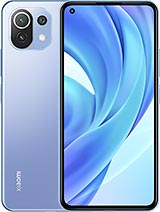Poco F3 vs X3 Pro vs Mi 11 Lite vs Redmi Note 10 Pro Camera Comparison By TechwithUsama
Hi folks welcome to the full camera comparison between the polo, f3 Poco x3, pro me lemon light and the Redmi Note 10 pro now the front video recording mode that is common among all these phones is 1080p at 30 frames per second Poco f3, and the m11 lite also offer 1080p at 60 frames per second, but the other two phones do not have this feature, so I am including the videos short in the common mode. Only now it's really difficult to appear in all the four phones at the same time. So I hope you guys won't mind this. I am walking outside under 40 degrees for the sake of recording this video, and this is a handheld video. So this will give you an idea about the stability first the voice recording quality of all these phones. The color composition highlights dynamic range managed by all these phones and all other aspects that you would like to know when it comes to the front camera of these phones.
So after this we'll go through the camera hardware of all, the phones, I'll also give you a quick overview of the camera applications, and then we'll take a look at the photos shot from the rear and then the front camera of all the phones. Let's go ahead and check that out now. As far as the hardware is concerned, the Poco f3 has the main 48 megapixels camera sensor. This is a Sony mix 582 sensors. Yes, a two-year-old camera sensor, it uses the image processing of the snapdragon 870 chipsets, which is of course flagship.
The Poco x3 pro uses the same Sony, mix 582, 48, megapixels main sensor and uses the image processing of snapdragon 860 chipset me, 11 lite uses the Samsung gw3 64 megapixels main sensor, and it's using the image processing of the snapdragon 732g chipset Redmi Note 10 pro in the end, is using the main Samsung hm2 108 megapixels camera sensor, atop of the snapdragon 732 732g image processing other camera. Details of all these phones are right on your screen, and before we go ahead, please make sure that you have hit the subscribe button and hit the like button. If you find this video useful at some point, the camera apps on all these phones are very feature rich. They share the same features all across the dual video mode, clone mode slo-mo for both the front and the rear cameras, vlog mode and many other features are available all across the pro mode of both the Poco phones has an additional histogram and audio level parts. Other features of the pro mode are also the same.
All phones have the raw capture in the pro mode. I have taken a lot of videos and the images on all the phones. Let's start it off with the rear camera videos. Now these are all the handheld videos and all the phones were mounted on the same tripod. Keep your eyes on the color of the sky.
Note down the stability and overall resolution of the videos. Remember. None of these phones has the optical image stabilization. A couple of these phones like the Poco f3 and the m11 light, have the 4k uh electronic image stabilization stable. Otherwise, the electronic image stabilization works in the 1080p at 30 frames per second on all the phones watch, these videos, and I'll catch you in a bit with the rear camera images.
Oh, oh, oh foreign, bye, the ultra-wide images. First, Redmi Note, 10 pro has completely blown off the background. Background looks the best on the Poco f3, but it has very dark shadows. Poco x3 pro is also doing very good. The mean ammo light can't quite maintain the color of the sky, and the dynamic range is poor for this phone too, the same image in the normal mode on all the phones.
This time the Poco f3 is the only phone that has maintained the background. Its dynamic range and highlight management is quite good. Saturation is too high on the mi level. Light Pogo x3 pro has a very poor, colorless and detail less image. The Redmi Note 10 pro has a super.
Bright image looks better than the mi level lights image. Otherwise, the Poco x3 pro me 11 lite and the Redmi Note 10 pro have over exposed the background. The highlights are fully blown off the same image in the high-res mode on all the phones, the only phone doing a good job. This time is the Redmi Note 10 pro its 108 megapixels camera has done a considerably better job in the high-res mode. The highlights, however, are blown off on all the phones.
The background is overexposed once again: mainland lights, images, highly saturated once again, details on the note 10 pro are the best Poco f3 third and the xv pro 4. It's a portrait mode image now, Redmi Note 10 pro has the best possible look for the subject. Mi lemon light has not blown off the background, thankfully, but it has compromised on the subject's look. Instead, the Pogo, f3 and x3 pro have an extremely warm image. This time I will now attach a good amount of rear camera images shot in the normal high-res and, of course, in the ultrawide mode.
There are some digitally zoomed images on your way as well. Now, in all these images, note down the amount of details checks out the color of the sky and check out how these phones capture the whites, the reds and the plaques, the phone producing the close to reality. Colors is the Poco f3 x3 pro has completely flipped the colors in some images, both the note 10 pro and the mi level light also perform a perfect job in the high-res mode. The images from the Redmi Note, 10 pro will have the highest amount of details, of course, because of its big 108 megapixel sensor, the mi level lights, details will fall at the second place due to its 64 megapixels camera and the Poco f3 and xv pro both will fall at the third place in the high-res mode. If a phone is maintaining the highlights, and it's not totally blowing off everything, that's supposed to be good and based on this assumption of mind, you can choose your winner for the high-res mode, so analyze all these images and drop your own analysis and thoughts in the comments below I will catch you guys in a bit once again.
Now here are the macro camera images I find the macro camera result almost the same on all the phones macro camera is quite good on all these phones. Just in case you are a macro photographer the night mode images now in the low light and the night mode images, the mi level light is the poorest performer. The Redmi Note, 10 pro is performing better than the Poco x3 pro the best night mode performer has to be the Poco f3 in this night mode and low light comparison area. Look at the selfies now saturation on the Poco x3 pro looks perfect. The background looks good on the promo f3 mi level, light and Redmi Note.10 pro have quite a similar selfie with not too high saturation. Both the Poco phones are producing considerably better selfies here.
Edge detection is the same on all the phones and portrait mode is impressive too. Now keep in mind that the Xiaomi Redmi Poco and all these phones produce extremely soft selfies. These selfies have a very beautified look, and these are not really close to the original color tone, and with this we reached the conclusion, keeping in view the all-round video and the photography performance. The Poco f3 is a clear winner. Redmi Note, 10 pros, 108 megapixels camera is good for capturing those.
The Poco x3 pro changes the colors a lot in the images, so I am giving this phone the third place, the mi level light, in my opinion, ties with the Redmi Note 10 pro at the second place, you are free to disagree and drop your own analysis and comments down in the comment section below hit the like button. If you haven't yet and subscribe, if you love my hard work and efforts put into this video with that being said, I will sign off and see you all in the next one.
Source : TechwithUsama


























